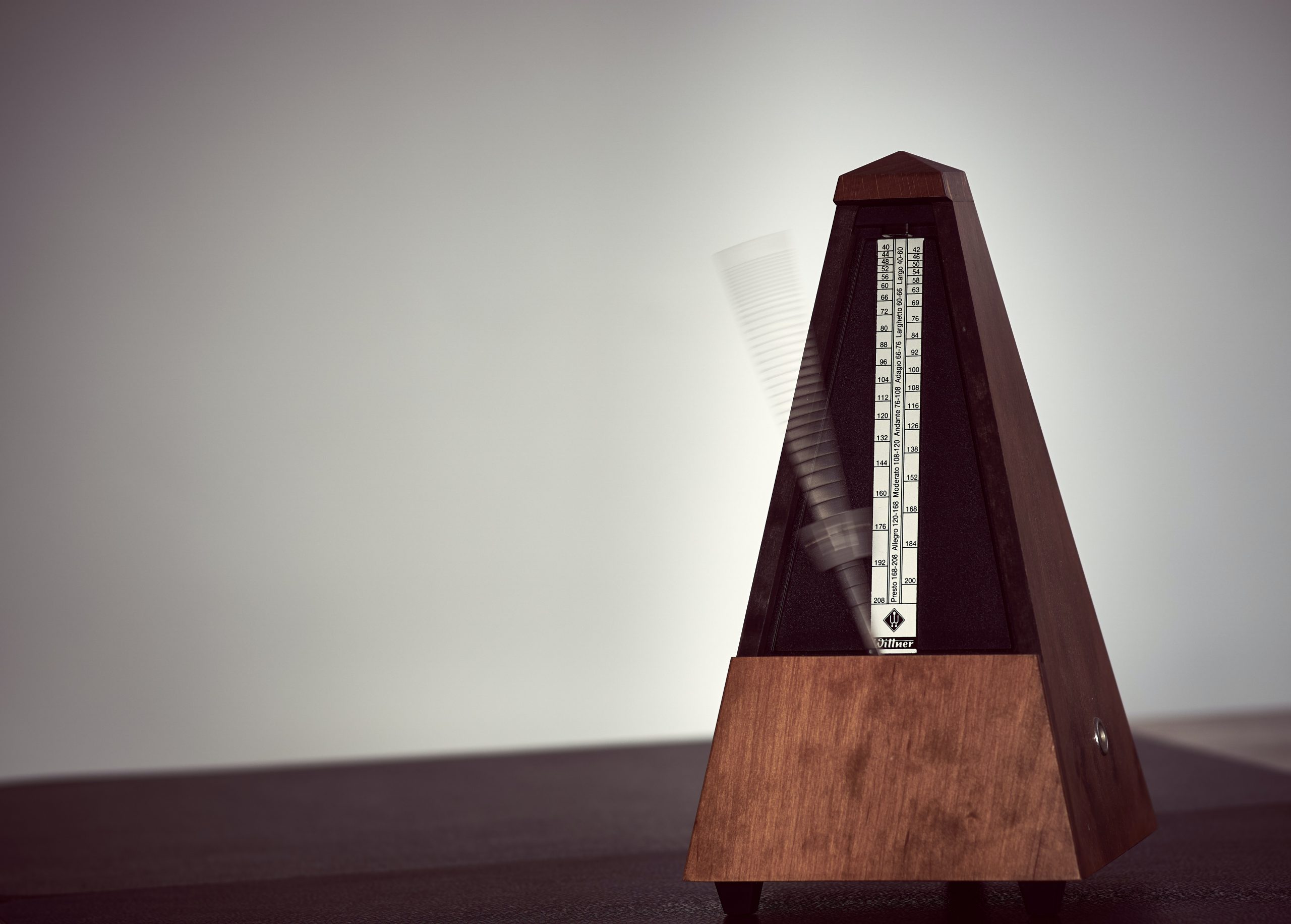Using a click track is a personal preference when recording music. Some musicians and producers swear by it, while others find it restrictive.
Ultimately, it depends on your workflow and style of recording. A click track is a tool used to keep time during a recording session. It’s an audible metronome that plays in the musician’s ear while they play or sing. The click sound is a consistent beat that helps musicians keep time and maintain a consistent tempo throughout the song.
However, some musicians find it distracting and prefer to record without one. We’ll discuss the pros and cons of using a click track and help you decide if it’s right for your recording process.

Credit: worshiponline.com
Pros Of Using A Click Track
Click tracks can greatly benefit musicians and performers by providing a steady rhythm and improving timing accuracy during live performances and recording sessions. It can also help with songwriting and arranging by allowing for precise tempo changes and easily mapping out song structures.
Playing in a band is all about timing and rhythm. If you want to stay in sync with your bandmates and ensure a consistent performance, using a click track is highly recommended. In this blog post, we will be discussing the benefits of using a click track, focusing on two key areas: improved timing and rhythm, and how it makes it easy to stay in time with the band.
Improved Timing And Rhythm
Using a click track improves your timing and rhythm. Essentially, it’s a metronome that you can hear while playing. Rather than relying on someone else to keep time or your internal sense of timing, a click track provides a constant beat that ensures you’re playing in time with the music. This is especially important when it comes to studio recordings, where precision is paramount. Whether it’s the drummer keeping the beat or a guitarist providing a rhythmic drone, everyone in the band should play to a click track.
Easy To Stay In Time With The Band
Using a click track makes it easy to stay in time with the band. It’s especially useful during rehearsals, where everyone in the band can practice together, playing to the same beat. The click track is audible to everyone in the band, so they can follow the rhythm and play in sync with each other. This is especially helpful if you’re playing with new band members or musicians who are not quite familiar with your style.
More Consistent Performances
By using a click track, your band can ensure more consistent performances. This is simply because everyone in the band is playing in sync with each other and to the same beat. There’s no deviation from the original tempo or rhythm of the song, so every performance will sound the same, with no unwanted changes in tempo or timing. In a live setting, a consistent performance can make all the difference in creating a great musical experience for the audience. In conclusion, using a click track has many benefits that should not be ignored. By providing a consistent beat and rhythm, click tracks help improve a band’s overall performance and ensure the music is played with precision. It’s certainly worth considering if you want to take your music to the next level.
Cons Of Using A Click Track
Using a click track can sometimes hinder the natural flow and creativity of a musician, leading to a robotic or mechanical sound. In addition, relying solely on a click track can prevent flexibility in live performances, making it difficult to adapt to changes.
A click track, also known as a metronome, is commonly used in music production to keep musicians in time with one another. While it has its benefits, there are also some downsides to using a click track that should be considered before deciding to use one.
Less Room For Musical Expression
One of the main drawbacks of using a click track is that it can limit the amount of musical expression in a performance. When playing with a click track, musicians must stick to a set tempo, which can make it difficult to add dynamics or change the tempo to fit the mood of a song. This can result in a performance that feels rigid and lacks the emotional impact that comes from a live, organic performance.
Can Be Distracting
In addition to inhibiting musical expression, a click track can also be distracting to some musicians. Musicians may become overly focused on keeping time with the click and lose sight of the overall performance. This can lead to a lack of spontaneity and creativity in the music.
Requires Practice And Preparation
Using a click track requires a significant amount of practice and preparation. Musicians must be able to play consistently in time with the click and be comfortable with the technology used to produce the click track. This can be time-consuming and may take away from time that could be spent focusing on other aspects of the performance.
Conclusion
While using a click track can have its benefits, it is important to consider the potential drawbacks before deciding to use one. It is ultimately up to each individual musician to decide what works best for them and their music.
When To Use A Click Track
Click tracks are a crucial component of recording music in a studio setting. These tools are used to create a consistent musical tempo, helping to keep tracks on beat and in sync. However, click tracks are not always necessary, and there are many situations where they may not be useful or even desirable. Here are some instances when you should consider using a click track:
In The Studio
When recording in a studio, a click track is a must-have for most musicians and producers. By keeping all of the instruments and vocals in sync, a click track can help create a polished and professional recording. It’s important to choose the right click track speed and sound to match the style of music being recorded, but once it’s set up, the click track can be a valuable tool throughout the recording process.
For Live Performances
While click tracks are traditionally used in the studio, many musicians also rely on them during live performances. By syncing up electronic elements, backing tracks, and visuals, click tracks can help create a more immersive and engaging live experience. However, it’s important to use click tracks sparingly during live performances, as they can also make the performance feel robotic and unengaging if used too heavily.
For Certain Musical Styles
Finally, click tracks are often used for certain musical styles that rely heavily on precise timing and rhythm. For example, electronic dance music (EDM) often relies on click tracks to create a consistent beat and tempo. Similarly, some metal, punk, and hardcore bands use click tracks to ensure that their fast, technical playing stays in sync throughout a song.
| Pros of using a click track: | Cons of using a click track: |
|---|---|
| Helps ensure consistent tempo and timing.Can make recording and performance more polished and professional.Useful for certain musical styles and genres. | Can make performances feel robotic and unengaging.Requires careful setup and adjustment to match the musical style and tempo.May not be necessary or desirable for all recording or performance situations. |
If you’re unsure whether or not to use a click track, it’s important to consider the style of music you’re creating and the context in which it will be performed. While click tracks can be a valuable tool in many situations, they should never be used as a crutch to compensate for poor timing or musicianship. Ultimately, the decision to use a click track should be based on the needs of the song and the preferences of the musicians and producers involved.

Credit: upayasound.com
Alternatives To Using A Click Track
If you’re looking to add variety to your music productions, ditching the click track can be a great way to experiment with timing and dynamics. Alternatives like using a human drummer or playing to a loop can help create a more natural and expressive feel in your recordings.
If you are not a big fan of using a click track, you are not alone. In fact, some musicians find it too restrictive and robotic, leading to robotic-sounding music. Fortunately, there are alternative ways to keep time while playing.
Internal Timekeeping
One way to keep time without relying on a click track is with your internal timekeeping. This alternative requires you to have good rhythm, so it may not work for everyone. You can practice this skill by tapping your foot or counting the beats in your head. To ensure that you keep track of the tempo, listen to recordings of music that has a consistent beat and try to memorize it.
Band Communication
Communication is key in any band. In the absence of a click track, ensure that everyone in the band is on the same page regarding the tempo and rhythm. You can achieve this by discussing the song’s tempo before rehearsal or playing, either by counting the beats in unison or by playing together as a group.
Using A Drummer Or Metronome
If you’re in a band, having a drummer who can keep time is a good alternative to using a click track. A good drummer can intuitively adapt to the tempo changes and fluctuations within the music. If you don’t have a drummer, you can use a metronome. Although it might sound more robotic, a metronome is still an excellent tool to keep the tempo steady. Using any of these alternatives to using a click track can help you to create more organic-sounding music while still keeping you on the beat. Of course, there are situations where a click track might be more appropriate, such as recording music for film or TV. However, these alternatives are worth exploring.

Credit: www.mixinglessons.com
Frequently Asked Questions On Should I Use A Click Track
Are Click Tracks Necessary?
Yes, click tracks are necessary for recording music. They help musicians stay in time and keep the tempo consistent throughout the entire recording. Without click tracks, it would be more difficult to synchronize different parts of a song and ensure that it sounds cohesive.
What Is The Point Of A Click Track?
A click track is a metronome-like tool used in music production to keep a consistent tempo during recording. It helps to ensure that all musicians and tracks are in sync and can be edited easily. Click tracks also allow for precise editing and overdubbing of music tracks.
Is The Click Track Method Still Used?
Yes, the click track method is still used in music production. It’s a popular tool for staying on rhythm and timing, particularly in recording sessions and live performances. Click tracks can be customised to the specific needs of the song, and there are various software and equipment options available.
Does Metallica Use A Click Track?
Yes, Metallica uses a click track during live performances to keep the tempo consistent. They also use it during recording sessions to maintain timing accuracy and synchronize multiple tracks.
Conclusion
Ultimately, the decision to use a click track is up to the individual artist and their musical intentions. While it can provide a sense of rhythmic consistency and stability, it may also limit creative expression and spontaneity. It is important to weigh the pros and cons and experiment with different recording techniques to determine what works best for each unique situation.
At the end of the day, the most important thing is to create music that feels authentic and true to oneself.